But Sledmere itself was to be his chief monument. Eight years after his death, a Hull merchant, Theopilus Hill, making an autumn tour through Yorkshire by chaise, visited it and wrote an account of his impressions. When Hill and his friends had finished their tour of the house, they roamed the grounds, taking in all of the ‘numerous and extensive’ plantations. They were amused by ‘a Pyramidical Monument of stone, with an inscription to the memory of some favourite dogs’, and visited the Orangery, which had ‘the largest and finest fruit we ever saw’. A gardener gave them a tour of the Walled Garden.
The Gardens are about two-and-a-half acres with Hothouses etc: in the latter we found many fig trees, and were informed they produced abundant fruit, which ripened well; the family are partial to this fruit. We found some very good apple trees, which the Gardener highly extolled for bearing large fruit and in all seasons: he said he knew not where Sir Christopher had got them from, but they had now acquired the name of Sledmere Apples. We also observed against a wall, a species of shrub, which the Gardener said was between a raspberry and a bramble, and bore fruit till Christmas: we tasted some of the fruit, and found it to be of good flavour.
Hill concluded his memoir with a eulogy to the creator of this paradise.
The House has been built twenty-two years, and the Plantations were made about eighteen years ago, by the late Sir Christopher Sykes; whose improvements are a lasting honour to his memory. He changed a naked and barren tract into a fertile, woody, and cultivated region; and his successor is treading in his steps; many other useful and ornamental additions being now in contemplation. 71
On 19 February, 1784, a day on which exceptionally deep snow lay round about, Christopher noted in his diary, ‘Mr Simpson and the boys left us.’ They were heading for York by coach, and the journey proved an eventful one. ‘We set off for York, got to Weighton in ye coach with much danger and difficulty,’ 1 reported Simpson, though they finally reached their destination on the evening of 21 February. The Mr Simpson who took Christopher’s sons away with him was the Revd John Simpson. He had been their tutor since October, 1778 when he had been recommended for the post by the Revd William Cleaver, Christopher’s former tutor at Oxford. He was paid a salary of £120 a year and was evidently regarded as a friend by his employer, who lent him money on a regular basis and occasionally took him as a companion on trips to London. On 2 January, 1782, for example, they had both ‘supped’ with Dr Johnson, while on 4 January they ‘dined’ with Mr Brown. 2 The boys were now coming up to the ages of thirteen, twelve and ten respectively and it was time for Christopher to consider the next step in their education. He decided to send Mark and Tatton to Westminster, where his Uncle Richard’s friend Henry Pelham and his brother the Duke of Newcastle, both Prime Ministers, had been pupils. The youngest boy, Christopher, was to remain under Mr Simpson.
‘I am exceedingly rejoiced you have determined to send your two Eldest Boys to Westminster,’ wrote Henry Maister in February, 1784, delighted that the boys were going to a school frequented by the sons of other Yorkshire gentry. ‘I went yesterday to Mrs CLAPHAMS, the House the HOTHAMS & HUDSONS are at, & which by all Accts. is the best in the place … she will have room for your two young Men, should you come up with them. I am sure you will like their Dame as they call her.’ He concluded his letter with an account of her terms: ‘£25 p.a. for Board and Washing, two Guineas for Fire and candle, two Guineas for Servants, eight shillings for Mending Linen and Cleaning Shoes, five Guineas Entrance Fees, two Guineas to the Masters, and an extra four Guineas a quarter for the use of a Single Bed’. In addition ‘each Young Gentleman to bring one Doz. Of Towels and one Table Spoon’. 3
Mark and Tatton went up to Westminster, to board in ‘Mother’ Clapham’s house, in June, 1784. The Headmaster was Samuel Smith, a man described by one of his pupils, the dramatist George Colman, as being ‘very dull and good-natured’. 4 Under his regime, the boys enjoyed a freedom that would be considered unthinkable today and the general atmosphere of the school appears to have verged upon almost constant anarchy. Bullying was rife. Frederick Reynolds, a contemporary of Colman’s, who a few years previously had attended the same house as the Sykes boys, described the treatment of new boys in his memoirs. On the very eve of his arrival, to shouts of ‘New boy! New boy!’, he was set upon by ‘a vast number of boys’ who subjected him to every manner of indignity. ‘After enduring an inundation of ink from every squirt in the room,’ he recorded, ‘till I, and my fine clothes, were of an universal blackness; after performing various aerial evolutions in my ascents from a blanket managed by some dozens pairs of hands insensible of fatigue in the perpetration of mischief; and after suffering the several torments of every remaining species of manual wit, I was at length permitted to crawl into my bed. There I lay, comforting myself with the assurance that torture had done its worst, till I gradually sobbed myself into a sound sleep.’ 5 Reynolds’s Welsh roommate was so tormented by bullies that he tried suicide by hanging himself from the bedpost, an attempt which failed when Reynolds returned to the room unexpectedly and cut him down. The boy’s reaction to his rescuer, when he had fully recovered, was to knock him to the ground. ‘There, take that,’ he cried with much apathy, ‘and the next time I choose to hang myself, you will know better than to prevent me.’ 6
There were instances of violence and rebellion against which the goings on in most of today’s inner-city schools pale in comparison. The Annual Register for 1779, for example, gave an account of the trial of ‘Messrs. Kelly, Lindsay, Carter, Hill, Durrell, and another six Westminster schoolboys … for an assault of a man in Dean’s Yard in January last, when they beat and wounded him in a most shocking manner, and after that, Kelly, with a drawn knife in his hand, said, “If you don’t kneel down and ask pardon, I will rip you up.”’ 7 In 1786, there was a rebellion at Westminster, led by Sir Francis Burdett. Though this may have been inspired by similar events at Eton College three years previously, when the boys had broken every window in the school, smashed up the Headmaster’s chambers and burnt chunks off the flogging block, it was ended swiftly when Headmaster Smith decided to exert his authority. He confronted Sir Francis and, when he refused to give ground, felled him with a blow from a thick stick. 8 He was subsequently expelled.
Though there is no record of what Christopher’s attitude was to the lax regime that existed at Westminster, the fact that his sons only remained there a year suggests that it did not please him. They both left in August, 1785, and, through his Egerton in-laws, he organised for them to attend a school run by the Bishop of Chester, until they were to go up to Brasenose College, Oxford. On their return home, the scene they found at Sledmere, where they were reunited with their family for the summer holidays, was one of chaos. The place was a building site, with work on the new servants’ wing at the back of the house being in full swing, and the levelling of the remains of the old village going on at the front. Even the gardens were a mess, with work on the new walled garden and the construction of hot houses going on apace. It was, however, a delightful change from the horrors of public school, and they were happy to see their siblings.
Of the younger children, Christopher, as befitted the third son of a gentleman, was destined for the clergy and attended the Revd Goodinge’s school in Leeds. The two girls, Decima and Elizabeth, remained at home with a governess. They were described by John Simpson after they had paid a visit to him at his parish in Roos as being ‘such good children that they must excite affection and regard for them wherever they go’. 9 Mark and Tatton matriculated from Oxford together in May, 1788. A letter written to their father in September, 1788, from the Bishop of Chester, reflects Christopher’s concern that they should be kept away from university low life. ‘I consider the Winter months,’ he wrote, ‘as much more useful with a private Tutor in College, and less dangerous, as giving less occasion to schemes & parties, than those of the Summer, and should think it better to take them away at Ladyday than now, as I have always found more difficulties with young men in the two Summer Terms.’ He recommended a Mr Morris. ‘Whilst [he] keeps them to their studies in the Evening from six to nine, they can never be more safe from drinking than under that engagement constantly kept up.’ 10
Читать дальше
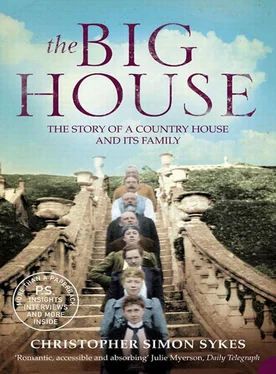
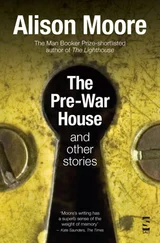

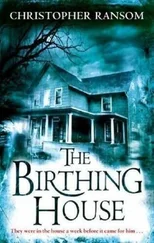



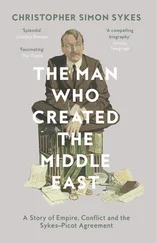

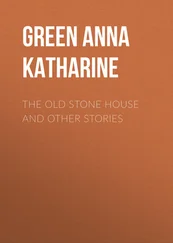


![Edward Ellis - Adrift on the Pacific - A Boys [sic] Story of the Sea and its Perils](/books/753342/edward-ellis-adrift-on-the-pacific-a-boys-sic-s-thumb.webp)